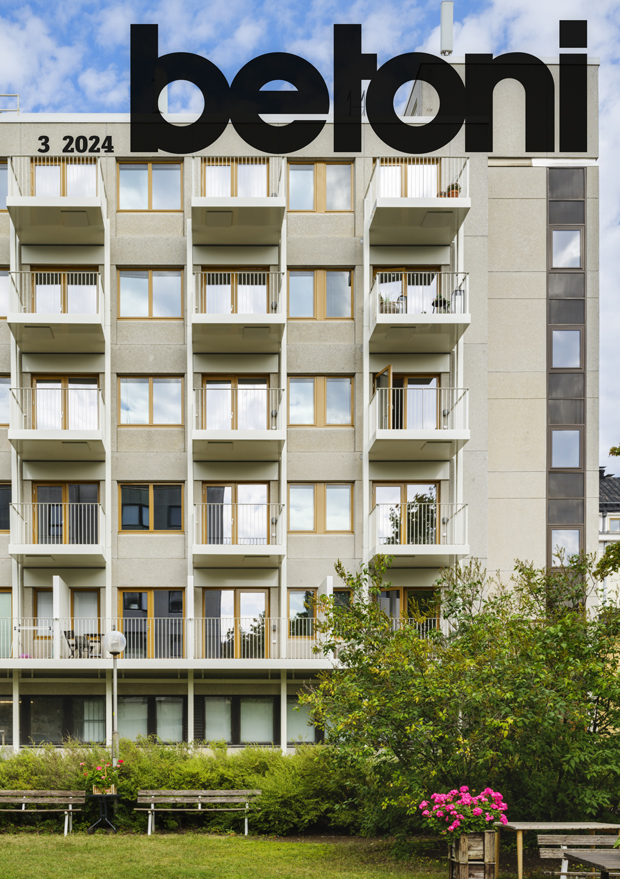In English | ISSUE 4/2023
Precast prestressed concrete beams made continuous as a deck structure

A deck structure may be defined as the roof of an underground functional space. The surface of the deck structure is part of the yard area, and the space underneath the deck structure is commonly utilised for car parking. Deck structures are often heavily loaded, with their construction and design being a demanding process. Thus, they are also expensive to build. Prestressed precast concrete is a typical structural solution when constructing Finnish parking garages, but in heavily loaded deck structures their use is less common due to limited experience and information. Making simple-span girders continuous by using a cast-in-place connection between girders over supports is a widely used solution to increase the range of use of precast prestressed concrete bridge girders. Compared to simple-span girders, continuous beams have reduced bending moments, advanced robustness and the ability of moment redistribution. Although the benefits of the structure are clear there are also challenges, including timedependent moment distribution, which is hard to predict, and limited information about the ductility of the continuity connection.
Scientific dialogue about the precast prestressed beams made continuous has existed mostly among bridge researchers. This thesis focuses on studying the possibility of using the structural system as a deck structure. The aim of this thesis is to obtain a better understanding of the behaviour of the whole structural system that consists of precast prestressed beams made continuous. A three-stage experimental programme was undertaken in 2018-2021. The scope of the experimental studies encompassed the investigation of time-dependent restraint forces, behaviour of the continuity connection near failure and moment redistribution of the continuous beam.
This thesis points out that capacity of simple-span prestressed precast beams may be significantly increased by making them continuous on site. The moment distribution of the studied structure is affected by two factors: restraint forces and non-uniform bending stiffness along the beam length. The restraint forces may be considerable, from which their development should be affected in the design phase. Cracking of the non-prestressed deck slab part of the continuity connection leads to a loss of continuity that needs to be considered in the determination of moment distribution. The experimental studies confirmed that it is possible to use high deck slab reinforcement levels at the continuity connection and simultaneously reach ductile failure mode, if the stirrups of the precast beams and transverse reinforcement of the deck slab are adequate.
More information: The permanent address of the publication is
https://urn.fi/URN:ISBN:978-952-03-3148-1




